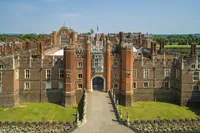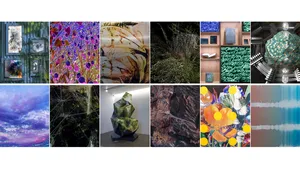Opening the gates of Hampton Court Palace for virtual visitors to enjoy

Hampton Court Palace is an icon of English architecture, history and art, home to kings, queens, artists and thinkers since the Tudor times. As a heritage charity, Historic Royal Palaces are custodians of many beautiful buildings. We are always looking for new ways to bring the remarkable sites in our care to visitors who may not be able to see them in person. Collaborating with Google Arts & Culture enables us to do just that. In our most recent project together, we have opened the gates of Hampton Court Palace on Street View, digitised our ceiling and wall paintings collection and published new stories about the palace’s history. The partnership allows us to give people all over the world access to our sites, but crucially, it is also making a substantial contribution to our conservation work. The gigapixel images captured allow us to see some of the precious artworks in our care in more detail than ever before.
Follow in the footsteps of kings and queens
Aerial view of Hampton Court Palace from the east, showing the Great Fountain Garden in the foreground.

Hampton Court Palace is just over 500 years old and was a royal residence for three centuries. In that time, it is best known for having been King Henry VIII’s ‘Pleasure Palace’ and was occupied by the famous King and his six wives many times during his reign. The surviving Tudor interiors are some of the best preserved in the country. However, the palace’s later history is just as fascinating. It was extended by King William III and Queen Mary at the end of the 17th century and is a spectacular example of the work of Sir Christopher Wren. Opening the palace on Street View means that our online visitors can enjoy the Tudor and Baroque architecture in all its splendour.
Take a virtual stroll on Street View through majestic Tudor and Baroque interiors and 60 acres of formal gardens and 700 acres of parkland. You may even spot descendants of Henry VIII’s deer herd in Home Park if you look closely! Take in the famous Great Hall – one of the finest examples of a hammerbeam roof in the country. Shakespeare once performed for King James I in this room – now everyone is welcome.
The Great Hall built by King Henry VIII. The Hall is an entranceway to the King’s state apartments and was a communal dining room.
The Privy Garden at Hampton Court Palace, showing the baroque East Front of the palace and the green formal planting of the garden.
Fallow deer in Home Park. Hampton Court Palace can be seen in the distance.
Zoom into the detail
The beautiful painted ceilings and murals were a luxurious backdrop for the people who lived and worked at the palace. In partnership with Google Arts & Culture we have photographed many of these large-scale paintings in gigapixel detail for the first time. The overwhelming size of these painted interiors means many of the best details may be missed. As a charity, we create spaces for spirits to be stirred. Take a moment to stop and take in the beauty and artistry.
The Abduction of Cephalus, by James Thornhill, 1715. Thornhill's ceiling in the Queen's Bedchamber at Hampton Court is in the style of the expansive and exuberant interior decoration of the early 18th century, and tells the ancient myth of Aurora's abduction of Cephalus.

Conserving the palace for future generations to enjoy
The amount of detail that 360-degree and gigapixel photography provide of the palace spaces means that we can use these images to help make plans and protect this precious Tudor and Baroque palace for future generations to see and enjoy. Our conservators use detailed imaging to inform the meticulous and careful work they do to care for the palace’s interiors. Creating this online experience is also helping our charity give the palaces a future as bright as their past.
Our conservators use detailed imaging to inform the meticulous and careful work they do to care for the palace’s interiors. Dr Constantina Vlachou-Mogire, Heritage Science Manager, makes use of the newly upgraded scientific laboratory at Hampton Court Palace. The new state of the art equipment is thanks to a CapCo 2021 funding grant from the Arts and Humanities Research Council (AHRC).

Take your own tour of the palace and see the beautiful paintings, intricate ceilings and stunning grounds via goo.gle/hamptoncourt







